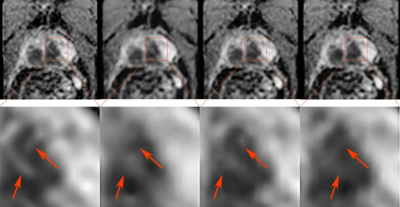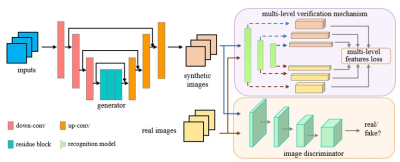lei hu1, Jungong Zhao1, Caixia Fu2, and Thomas Benkert3
1Department of Diagnostic and Interventional Radiology, Shanghai Jiao Tong University Affiliated Sixt, 上海, China, 2MR Application Development, Siemens Shenzhen magnetic Resonance Ltd, shenzhen, China, 3MR Application Predevelopment, Siemens Healthcare, Erlangen, Gernmany, Erlangen, Germany
1Department of Diagnostic and Interventional Radiology, Shanghai Jiao Tong University Affiliated Sixt, 上海, China, 2MR Application Development, Siemens Shenzhen magnetic Resonance Ltd, shenzhen, China, 3MR Application Predevelopment, Siemens Healthcare, Erlangen, Gernmany, Erlangen, Germany
The
proposed deep learning algorithm might be a feasible method to generate ADC
maps instead of z-ADC maps without significant hardware dependance and
additional scan time.

Fig.2 A 61-year-old man with prostatic cancer
with prostate specific antigen level of 50.88 ng/ml.
Both
of s-ADCb1000 and s-ADCb1500 had good performance in
displaying the prostate, pelvic floor musclesm and pubic symphysis while s-ADCb50
produced blurry images of these structures. Regarding level of detail, s-ADCb1000
is more similar to z-ADC than s-ADCb1500 and maintains the details seen
in z-ADC (red arrows).
